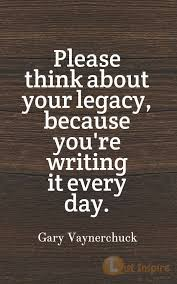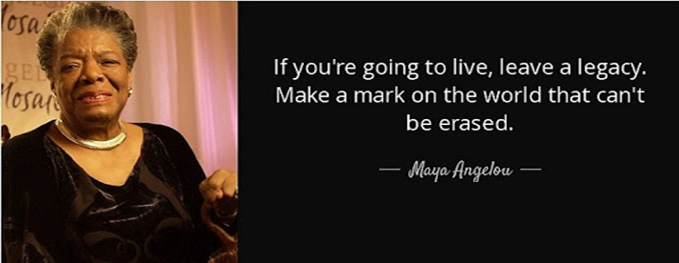How to create your legacy

Your legacy is what you leave to the next generations — the impact for good or bad. Thinking and planning your legacy goes along way to creating the course of action for your family, company or government department that you work for, or your business. What you plan and do now will have long-reaching results. By thinking about things now, you can prevent many of the unintended consequences that may happen.
This is, of course, if you are a positive, caring, sincere individual who wants the best for others. Which I am sure you are; otherwise, you wouldn’t be reading this now. Leaving your legacy isn’t by default or accident, although this happens to be the case all too often. Les McKeown wrote it best when he penned, “The foundation of building a legacy is a deep sense of knowing — not just knowing what is important to you, but what is non-negotiable.”
What are the different aspects of one’s legacy?
Values and life lessons:
- passing on the life lessons you have learned
- teaching and modelling right from wrong and inclusiveness versus exclusiveness
- helping others getting what they need
- showing moral fiber and integrity
- loving and being loved
- creating memories
Connections:
- How do you spend time with your loved ones? Is it mostly positive?
- How do you treat your loved ones? What is the message you want to send?
- How do you treat others in general? Do you encourage developing relationships?
Jim Rohn summed it up well when he said, “The legacy we leave is part of the ongoing foundations of life. Those who came before leave us the world we live in. Those who will come after will have only what we leave them. We are stewards of this world, and we have a calling in our lives to leave it better than how we found it, even if it seems like such a small part.”
Financial, which has two aspects:
- Personal
- What do you want to leave for your children and grandchildren?
- Where are your hard assets (house(s), cabin/cottage, cars, art, recipes, memorabilia, stories) going?
- If you own a company, is there a succession plan?
- Public
- funding charitable causes
- funding community causes
- giving gifts to organization, institutions, and schools
“Too often, leaders put their energy into organizations, buildings, systems or other lifeless objects,” says John C. Maxwell, leadership expert and bestselling author. “But only people live on after we are gone. Everything else is temporary.”
Steps to enacting your legacy plan
- Document all your assets and liabilities. Create a complete paper trail, complete with mortgage, liens, pictures, and account numbers.
- Try to alleviate any burdens you may leave behind.
Most of us like to think of all the positive things we do, but in fact, thinking about the negatives or burdens that your action or lack of action can cause is far more powerful. In many cases, by looking at what negative effects may happen, you can start doing things NOW to make sure your legacy is positive and modelled that way.
Have a will and living will prepared in the event of premature passing and keep it updated. Make sure you are fully aware of the tax implications the beneficiaries of your estate will and will not be responsible for. There are many good ways to illuminate or alleviate the tax burden. Finally, make sure that you have your important papers and information in two places — in your attorney and executor’s hands.
- Create a vision of what you would like your legacy to look like. The more you know about what you like and what is important to you, the more knowledge you can pass along. More important than that, you can start living your life with a more focused intention.
- Do what you always wish you would have done or make it possible for others to do it. For example, missions work, humanitarian aid, and making a difference somewhere, somehow.
- You are important. Even if you don’t think so, you made a difference. Record your story by writing it, videoing it, or telling it to those you love. Nothing says I love you more than sharing your life and story with those close to you.
- Talk to a tax accountant and formulate a plan of passing your assets down. Maximize your tax reduction with buying annuities, charitable contributions, having the proper amount of life insurance to cover the taxes the beneficiary’s will have to pay, trusts, setting up a limited liability company, or in the case of a second marriage a life estate.
- Keep it up to date — review it every year.

